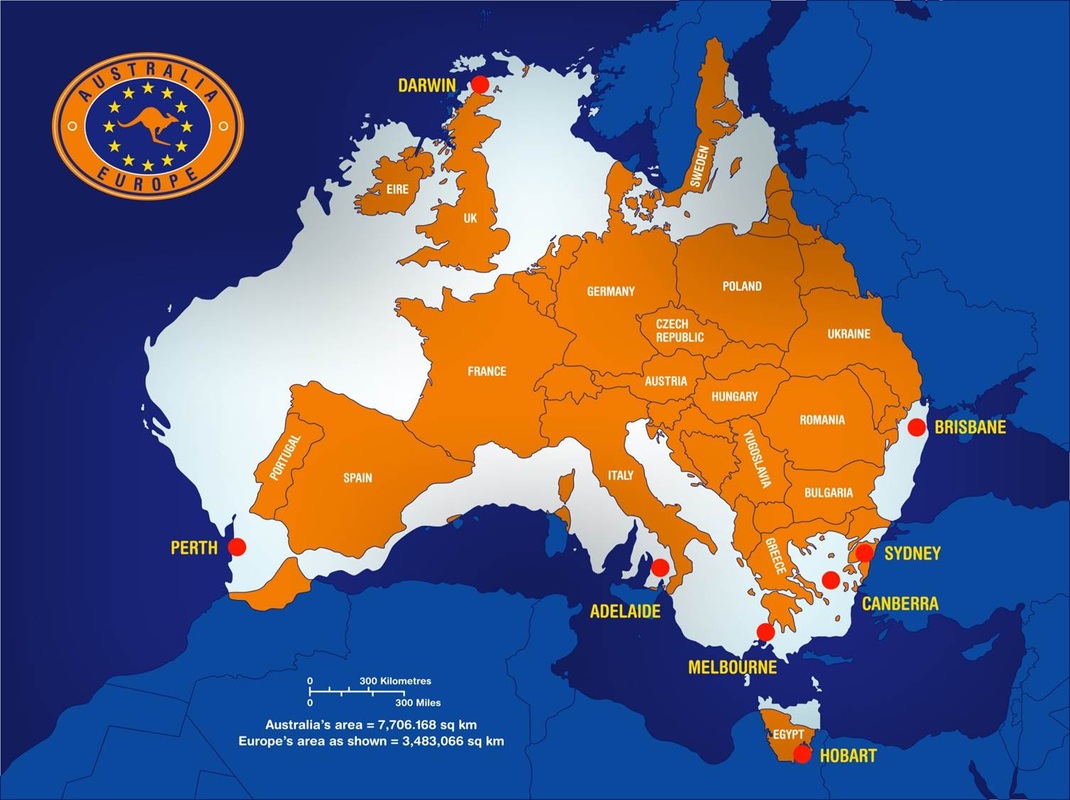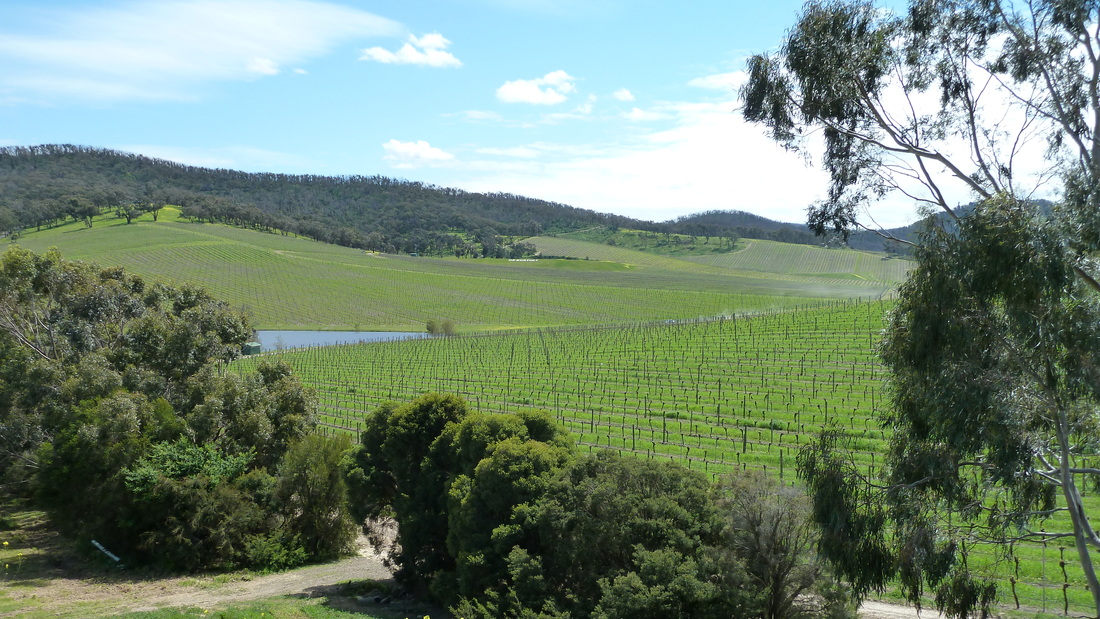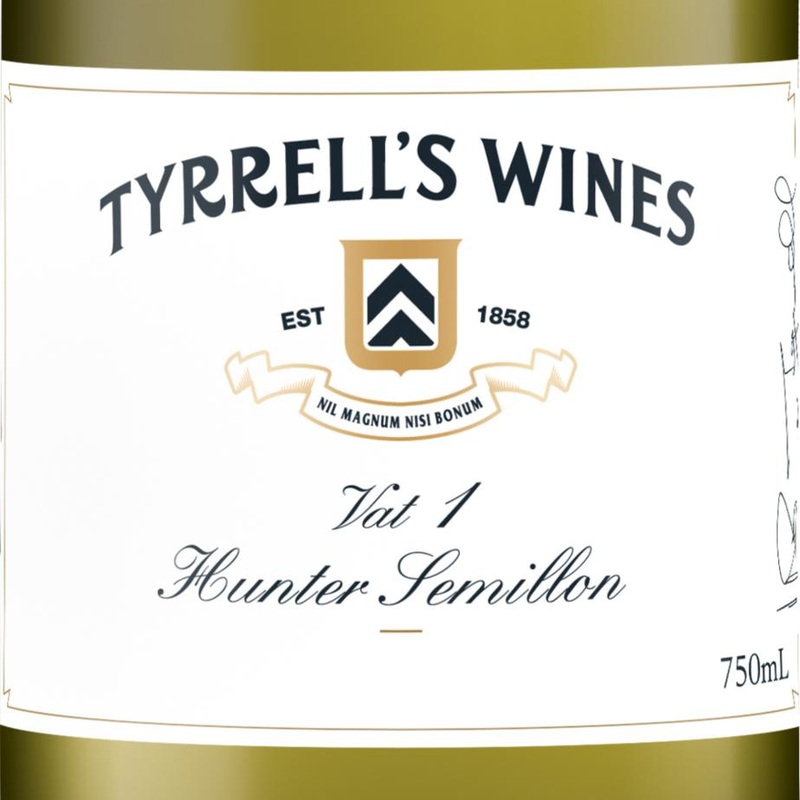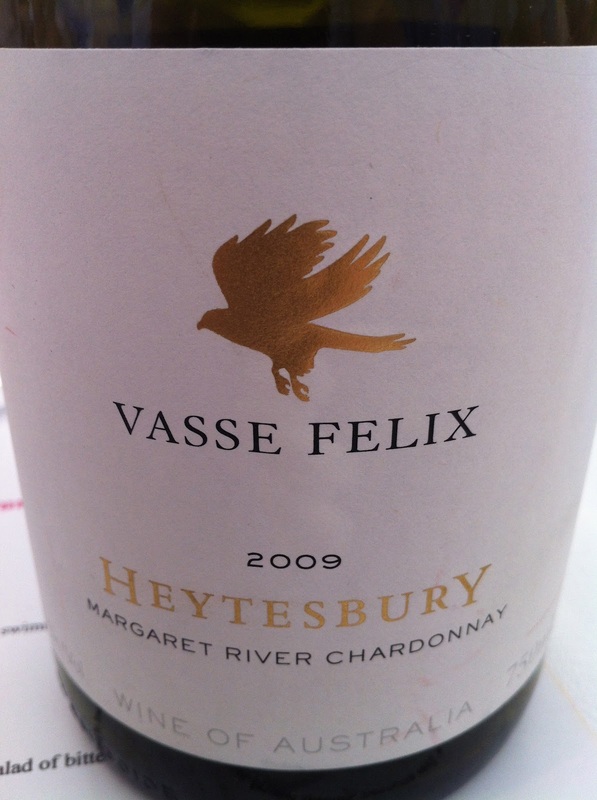n
Australia is also the only county where the detonation of a nuclear device by a non-military or non-scientific entity took place. Absolutely true; in 1997 a piece appeared in the New York Times about scientists investigating the possible detonation of a small nuclear bomb almost four years before in the outback. As it turns out, a Japanese terrorist group, Aum Shinrikyo, had indeed set off such a device on the night of May 28, 1993 near Banjawarn Station in the great Victoria Dessert of Western Australia. Even though the few inhabitants of this sparsely populated region reported seeing a bright flash in the sky followed by a tremendous boom, the event went otherwise unnoticed until days after the fact when Australian scientists noticed an unusually high amount of radioactivity in the atmosphere.*
I also like the fact that Australia as a country is home to many of the deadliest animals on the planet; literally everything from the box jellyfish to the blue-ringed octopus that could bite, sting or stick you to death in an instant. And they’ve got koalas and kangaroos, too. What’s not to like?
What about Australian wine? The country’s ascension from a jug-fortified wine industry to one of the world’s wine superpowers in a relatively short period of time can only be described as remarkable. t the height of the market in June of 2007, the Australian wine export market totaled over 2.8 billion Australian dollars and was growing at an annual rate of almost 9%. Sales in North America accounted for over two billion Australian dollars and made up 17% of our imports trailing only France with 31% and Italy with 28%.
Then things went south in a big way. The U.S. economic crash and strengthening Aussie dollar combined with the likes of drought, over planting, and over production to bring the tidal surge almost to a complete halt. Perhaps the most disappointing factor was that the Aussie wine tsunami crested and receded before anyone else in the country’s industry had a chance to follow, much to the chagrin of smaller producers, especially those in cooler climates.
Oddly enough, the American industry knows relatively little about the true scope of Australian wine simply because they’ve only been presented with commercial bottlings for the most part. It’s like thinking all German wine is Blue Nun. Thus the real story of Aussie wine has really never been discovered despite the huge numbers and widespread public awareness of what can only be described as a single style of wine. But that’s beginning to change.
Climate
It’s easy to right off all Australian climate as hot. Mark Davidson had the ultimate weather forecast for the middle of the country over the next 1,000 years: hot and very hot. All kidding aside, many of the country’s best growing regions are in cooler climates such as Yarra Valley, Mornington Peninsula, and Adelaide Hills. It’s important to remember that vineyards planted at altitude, in close proximity to bodies of water, or subject to the cold southern breezes from Antarctica are far cooler than their Barossa counterparts; not surprisingly, the wines have lower alcohol and high acid levels.
Soils
We geek out about soils and terroir all the time. It’s what we do. But for some mysterious reason, the Aussies have never talked about the fact that they have the oldest soils on the planet. Outside of the famed terra rosa of Coonawarra, practically no one knows about this. Australia is not that seismically active when compared to a country like New Zealand, so it’s not uncommon to find soils in a vineyard over a hundred million years old. And that, meine freunden, is amazing.
Old Vines
Given the blight of phylloxera in Europe in the 19th century, Australia possesses one of the greatest proliferations of old vine plantings in the world. I strongly believe that these heirloom vineyards are one of the country’s great vinous resources and makes for styles of wines not found anywhere else.
Flight I: Semillon and Riesling
I dubbed flight one as the “quad espresso” flight because if you weren’t awake by the end of it, you were probably dead. All six wines showed shockingly high acidity. In particular, the Hunter Valley Semillons are unlike any other white on the planet. It’s hard to believe wine so low in alcohol (11-12%) and with such high natural acidity can be grown and made in a subtropical climate of considerable heat and humidity. Nonetheless, a tradition of making these age-worthy laser-edged whites has existed for decades. Likewise, Eden and Clare Rieslings are made in hot climates with the caveat of extreme diurnal shift. I’ve written about their acid levels and austere character in another post titled “dominatrix wines.” These never disappoint and are among the most singular style of Riesling made anywhere.
(http://www.timgaiser.com/1/post/2012/2/dominatrix-wines.html).
1. 2011 Tyrell’s Vat 1 Semillon, Hunter Valley 11.5%
Notes of white flower, lime, toast, and chalk; precise, intensely flavored, and wickedly concentrated; will not be released commercially until 2016 or 2017.
2. 2011 Brokenwood Semillon, Hunter Valley 12%
White peach, citrus blossom, lime, passionfruit, and mineral; broader and more forward then the Tyrell’s but with great intensity.
3. 2011 Kilikanoon Riesling, Mort’s Block, Watervale 12.4%
Aromas and flavors of lime, toast, white flower, and limestone; great mineral intensity; austere, tart, and focused.
4. 2006 Pewsey Vale Riesling “The Contours” 12%
The most deceptive wine of the flight; nose of perfumed lime blossom, under ripe white peach, tart citrus, and a host of mineral/TDN notes; a quick blast of succulent tart citrus on the palate immediately followed by ferocious minerality. The “Contours” is one of my favorite Rieslings. There is nothing else like it. It reminds me of the part in Goldfinger where James Bond is about to be sliced in half by a laser beam.
5. 2006 Brokenwood Semillon ILR 11%
Brokenwood’s reserve wine shows notes of passionfruit, lime, toast, and pronounced mineral; the palate is sleek and powerful with decades of life ahead. Like liquid jumper cables.
6. 2005 Tyrell’s Semillon Vat 1, Hunter Valley 11.2%
The essence of the quad iced espresso experience: a seamless expression of Semillon just barely starting to show its stuff at 7 years old.
It was Chardonnay that first put Australia on the map with the British press in the early 1980’s. Lately, we’ve written the wines off thinking that there can’t possibly be anything new. How wrong we are. This flight surprised with more restrained use of ML, oak, and higher natural acids. Especially impressive were the Chablis-like Bindi and the Vasse-Felix, a dead-ringer for a top flight Meursault.
1. 2008 Bindi “Composition,” Macedon Ranges 14%
Honey, lime, white blossom, peach, and sour apple with notes of toast, spice, and mineral; the palate is all mineral and tart citrus with a long, juicy finish. It’s worth noting that the soils in the Bindi Chardonnay vineyard are over 300 million years old.
2. 2010 Shaw & Smith, Adelaide Hills 13%
Notes of pear, lemon curd, and floral with a touch of new wood; the palate is elegant, focused, vibrant, and tightly coiled. No SO2 was added at any point during the winemaking.
3. 2009 Penfolds Yattarna, Tasmania-Henty-Adelaide 12.7%
A very deceptive wine with lots of spicy barrel notes and juicy, ripe tropical fruit up front quickly replaced with tart sour green fruits and mineral. Not nearly as much wood on the palate. Angular and backwards, it needs time. Check out the low alcohol level.
4. 2010 Vasse Felix, Margaret River 13%
Very savory, earthy nose with yeast and fermentation notes combined with ripe apple, peach and both tart and sweet citrus. The palate is rich and, dare I say it (Dare! Dare!), Burgundian, with yeast, SO2 and earth notes.
5. 2008 Leeuwin Estate Art Series, Margaret River 14.5%
This is old-school, big-ass polished Aussie Chardonnay with pineapple, peach, yellow apple, and sweet citrus notes. There’s also the expected buttered popcorn and barrel spice elements as well. The palate is surprisingly restrained with some high toned citrus notes and balancing wood. Tastes like the Wente clone.
Aussie Shiraz has been both the industry’s strength and weakness. For all intents and purposes, warm climate Shiraz has been the country’s main calling card. But at its extreme, the wines are known for stewed prune, Vicks VapoRub, and overt American oak qualities. But there is so much more to the range of Aussie Shiraz and this flight showed it in spades. Especially impressive were the Luke Lambert and Clonakilla wines. Pour the former blind and it would be hard not to call it Cornas from a top producer. The tasting ended with two classics, the utterly delicious “Signature” Shiraz-Cabernet blend from Yalumba, and the 2007 Penfolds Grange—a world-class red in any and all respects.
1. 2010 Luke Lambert Syrah, Yarra Valley 13.5%
Very savory with white pepper, roasted meat, soy, bright red fruits, shitake, turned soil, and touch of wood. Dead ringer for Northern Rhône.
2. 2008 Clonakilla Shiraz-Viognier, Canberra District 14%
A combination of tart and dark fruits with licorice, leather, pepper, beef jerky, and cola notes. The palate is utterly seamless and ever-changing like the rose window in a cathedral. Clonakilla is almost impossible to find even in Australia. It’s easy to see why.
3. 2010 Chapel Hill “The Vicar” McLaren Vale 14.5%
Dense black hole color; kirsch, fruit compote, violet, and anise-spice notes; immense and yet light on its feet. Like an enormous weightless black rock.
4. 2004 Yalumba “The Signature” Shiraz-Cabernet Sauvignon, Barossa Valley 14.5%
Dried cherry, currant, cedar, cocoa-mocha, and eucalyptus with bitter chocolate and spice on the finish; wonderful texture with a long and persistent finish.
5. 2007 Penfolds Grange Shiraz, Barossa and McLaren 14.5%
Immense, textured, dense, rich, spicy, tight, and powerful; at five years old, it’s still backwards and decades of life are promised.
Parting Thoughts
After tasting through the wines several different times, it’s easy to see a genuine quality-price relationship exists at all levels of Australian wine. Going forward, there will be far more awareness of the country’s cool climate and single appellation wines, especially the regionally distinct wines in the $18-$35 range. Over time these will become a major part of the industry’s image. Mark Davidson called it “heritage and innovation all in a nutshell.” I couldn’t agree more.
*Thanks to Bill Bryson and his wonderful book, Notes From a Sunburnt Country
nn





